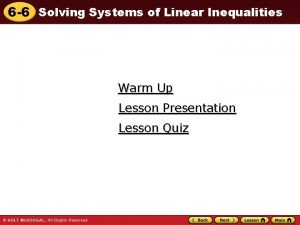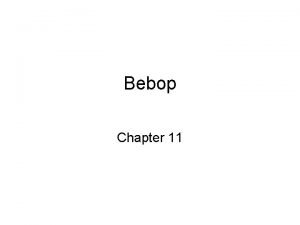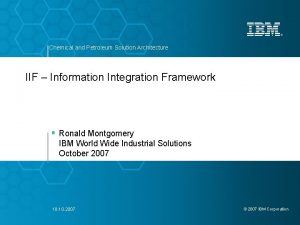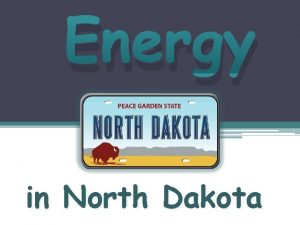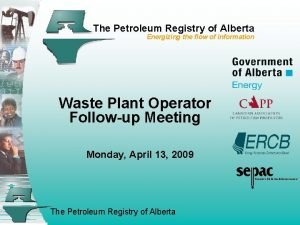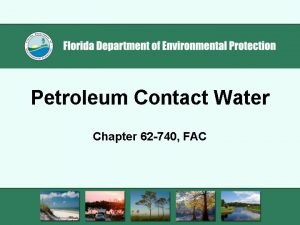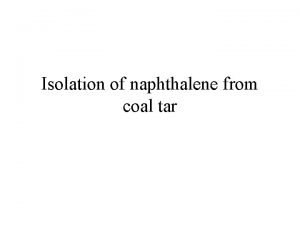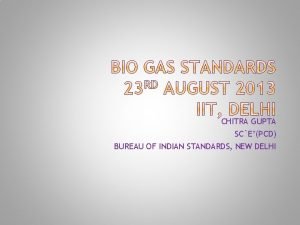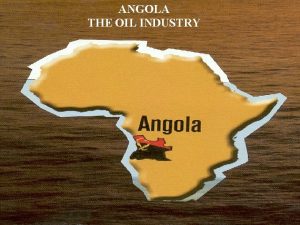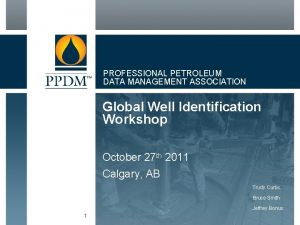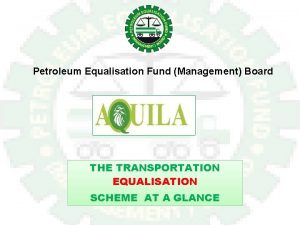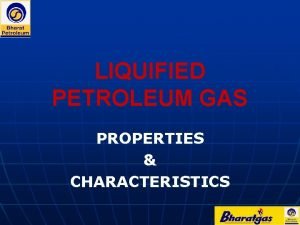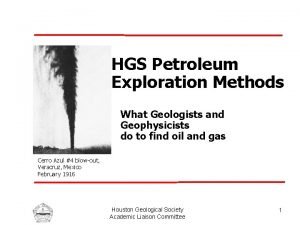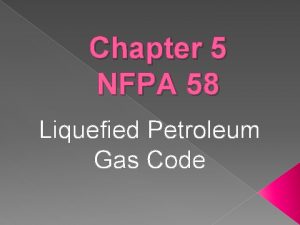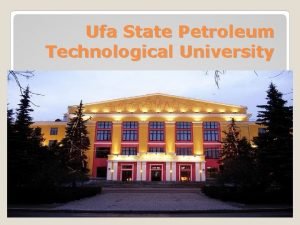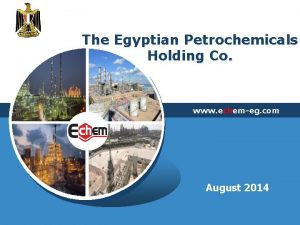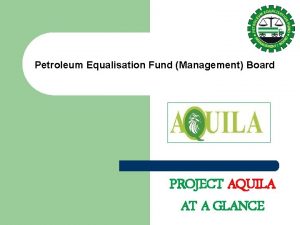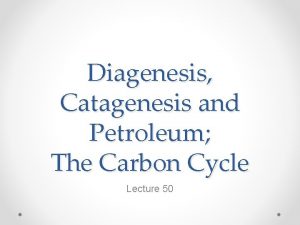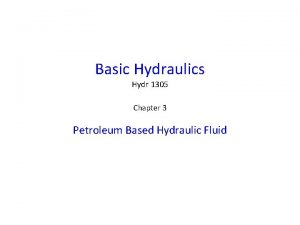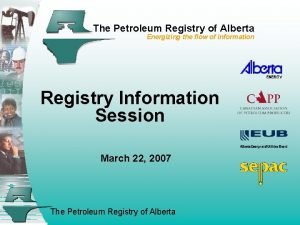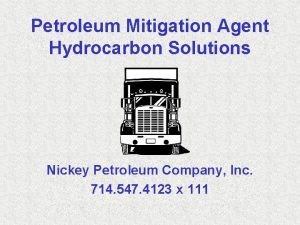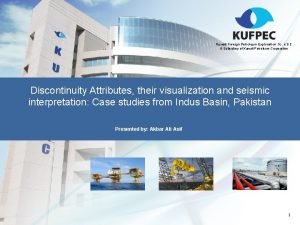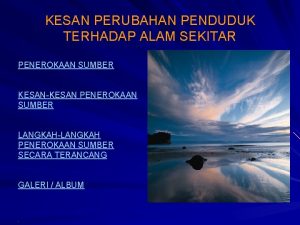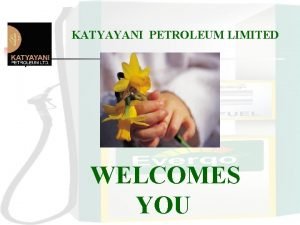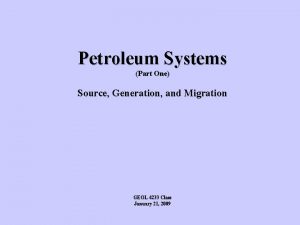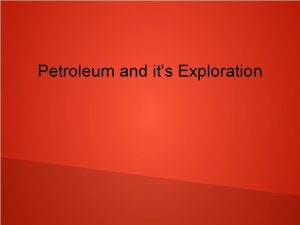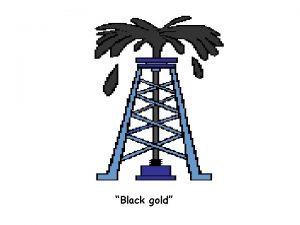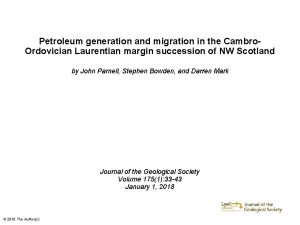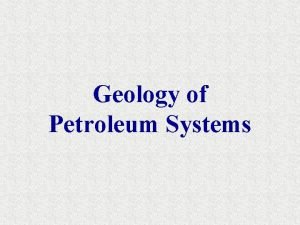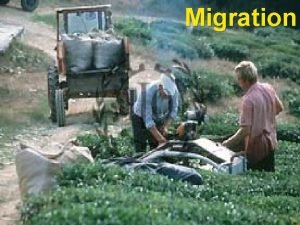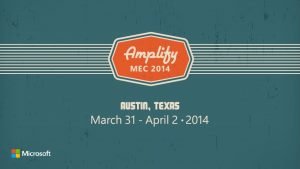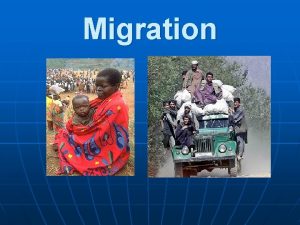Petroleum Systems Part One Source Generation and Migration






















































- Slides: 54

Petroleum Systems (Part One) Source, Generation, and Migration GEOL 4233 Class August, 2011

Petroleum Systems Elements Source Rock Migration Route Reservoir Rock Seal Rock Trap Processes Generation Migration Accumulation Preservation

Petroleum System Summary • Source (Material and Rocks) • Generation (Maturation) • Migration • Trap • Reservoir

Source Material Non-Biogenic Origins Biogenic (Kerogen) – Host rock (Shales and Coals) Kerogen Types Type I – Algal (oil prone) sapropelic Type II – Mixed Type III – Woody (gas prone) humic

Siljan ‘Ring’ Inorganic Gas Prospect Drilled to ~22, 000’ in 1987 Found abiogenic methane, but no poro-perm


Sedimentary Rocks – Where the Action Is

Source Material Non-Biogenic Origins Biogenic (Kerogen Types) Type I – Algal (oil prone) sapropelic Type II – Mixed Type III – Woody (gas prone) humic Host rock (Shales and Coals)

Types of Petroleum Oil and gas are formed by thermal cracking of organic compounds buried in fine-grained rocks. Algae = Hydrogen rich = Oil-prone Wood = Hydrogen poor = Gas-prone

Kerogen Types Type 1 Type 2 Type 3

From the Paleontological Research Institute <http: //www. priweb. org/ed/pgws/history/pennsylvania. html>

Ganges Deltaic Sediments

Modern Mahakam Delta Plain East Kalimantan, Indonesia (A Rich Source of Kerogen)

Inferred Middle Booch Depositional Environments Arkoma Basin in Oklahoma

Source Material Non-Biogenic Origins Biogenic (Kerogen Types) Type I – Algal (oil prone) sapropelic Type II – Mixed Type III – Woody (gas prone) humic Host Rock (Shales and Coals)

The Origin of Petroleum Organic-rich Source Rock Thermally Matured Organic Matter Oil

Source Rock for Petroleum Organic-Rich Thin Laminae 1 Inch Total Organic Carbon Hydrogen Index 3. 39 378 LOMPOC Quarry Sample Monterey Formation, CA

Woodford Shale (Oklahoma)

Channel-Fill Sandstone Resting on Marine Shale Red Fork (Oklahoma)

Coals and Coaly Shales San Juan Basin (New Mexico)

Source rock kerogen can be correlated to oil/gas found in carrier beds and reservoirs

Basinal Summary Chart T. O. C. Total Organic Carbon

Petroleum System Summary • Source (Material and Rocks) • Generation (Maturation) • Migration • Trap • Reservoir

The Petroleum Kitchen Temperature-Pressure-Time Geothermal Gradient: (thermogenic hydrocarbons) Range: <1 to 11 degrees F per 100’ Typical Sedimentary Basins: 1. 0 -1. 7 degrees F per 100’ Good average 1. 2 Oil window of ~ 120 -300 F (50 -150 C), or about 5, 000 -20, 000’ In practice, oil below 15, 000’ rare Gas – no practical limit to stable depth Cracking of oil to gas controlled by source kerogen and temperature Deep basins mostly gas Practical limits related to maturity of source – not reservoir


Hydrocarbon Occurrence & Thermal Maturity

Oklahoma Geologic Provinces

Map of Oklahoma Oil and Gas Fields; Distinguished By GOR and Coalbed Methane Production. From Boyd (2002) (GOR Cutoffs: Oil <5, 000; Oil and Gas 5, 000 -20, 000; Gas > 20, 000)

Schematic Cross-section of the Anadarko Basin Modified from Witt and others (1971).

Geologic Time Scale Modified From Harland (1990) and Hansen (1991).

Regional Stratigraphic Cross-Section (Hung from Top of Booch) Oklahoma Arkoma Basin (Booch) (Present burial depth not necessarily maximum burial depth)

Arkoma Basin Estimated Overburden Removal

Petroleum System Summary • Source (Material and Rocks) • Generation (Maturation) • Migration (Expulsion) • Trap • Reservoir


Source Rock for Petroleum Organic-Rich Thin Laminae 1 Inch LOMPOC Quarry Sample Monterey Formation, CA

Migration Pathways • Hydrocarbon Expulsion • Vertical vs. Horizontal Migration • Residual Saturations


Present-Day Petroleum System GEOGRAPHIC EXTENT OF PETROLEUM SYSTEM A Present-Day Trap A’ STRATIGRAPHIC EXTENT OF PETROLEUM SYSTEM nt e m se a B Petroleum accumulation Top of oil window Bottom of oil window Overburden Seal Reservoir Source Underburden Magoon and Dow, 1994

Inferred Middle Booch Depositional Environments Arkoma Basin in Oklahoma

Petroleum System 1) Early Generation Spill Point Migration from ‘Kitchen’ 2) Late Generation Spill Point Reservoir Rock (Sandstone) Seal Rock (Mudstone) Gas beginning to displace oil Displaced oil accumulates Gas displaces all oil



The Leaky Trap

Petroleum System Processes Accumulation Source Rock

Schematic Migrational Pathways From Basin to Shelf

Asphalt Seep Viola Limestone (Oklahoma) The End of the Road

On to the Trap

One More Thing……. Basin Assignments • North American • San Juan • East Texas • Gulf Coast • Anadarko • Arkoma • Powder River • Wind River • Green River • Williston • Delaware • Midland • Black Warrior • Fort Worth • Others………. . Michigan Appalachian Big Horn Salina Pedregosa Denver Forest City

Facts to Consider Basin Location, Size, Maximum Depth, Age (from basement to outcrop + max subsidence), Stratigraphy Other items; eg - Structure (extensional, compressional) Petroleum System Source Rocks: Name(s), kerogen type(s), TOC, depth to top of oil window, kitchen location Migration Pathways: Carrier bed(s), faults, distance (vertical and horizontal) Traps: Structural, Stratigraphic, Combination (dominant type) Reservoirs: Names, Rock types (both reservoir and seal) Representative Fields (The biggest ones) OOIP, OGIP, RF, Cum Prod Other notable Facts – anything else you want to add (history, technology, companies, etc) Powerpoint presentation: 10 -12 slides (or more), approach as management presentation in which object is to highgrade future exploration opportunities for your company. For any answers you cannot find, treat as source of increased risk of entry.

Map of Selected Sedimentary Basins 1 -Williston Basin 2 -Powder River Basin 3 -Denver Basin 4 -Salina Basin 5 -Forest City Basin 6 -Kennedy Basin 7 -Big Horn Basin 8 -Wind River Basin 9 -Laramide Basin 10 -Washakie-Red Desert B. 11 -Green River Basin




 First gen antipsychotics
First gen antipsychotics Lord you are good and your mercy is forever
Lord you are good and your mercy is forever Solving and graphing inequalities quiz
Solving and graphing inequalities quiz Night structure
Night structure Who of the following was not part of the bebop generation?
Who of the following was not part of the bebop generation? Faa nitrogen generation systems
Faa nitrogen generation systems One god one empire one religion
One god one empire one religion One one one little dog run
One one one little dog run One king one law one faith
One king one law one faith Byzantine definition
Byzantine definition One ford plan
One ford plan See one do one teach one
See one do one teach one See one, do one, teach one
See one, do one, teach one Studiendekanat uni bonn
Studiendekanat uni bonn One vision one identity one community
One vision one identity one community Asean one vision one identity one community
Asean one vision one identity one community Statoil ministry of petroleum and energy
Statoil ministry of petroleum and energy Mineral resources and petroleum authority of mongolia
Mineral resources and petroleum authority of mongolia Pros and cons of petroleum engineering
Pros and cons of petroleum engineering Pedec logo
Pedec logo Chemical and petroleum solutions
Chemical and petroleum solutions Petroleum and natural gas formation
Petroleum and natural gas formation Example of source integration
Example of source integration Contractor past performance examples
Contractor past performance examples 3 part source integration
3 part source integration Petroleum registry
Petroleum registry Petroleum ether composition
Petroleum ether composition Petroleum contact water
Petroleum contact water Why is ceramic wool heated in cracking
Why is ceramic wool heated in cracking Petroleum facts
Petroleum facts Advantage of natural gas
Advantage of natural gas Isolation
Isolation Composition of petroleum
Composition of petroleum Bharat petroleum
Bharat petroleum Botas pipeline
Botas pipeline Angola
Angola Professional petroleum data management association
Professional petroleum data management association Petroleum equalization fund recruitment 2020
Petroleum equalization fund recruitment 2020 Liquefied petroleum gas properties
Liquefied petroleum gas properties What is crude oil made of
What is crude oil made of Nfpa 58 separation distance
Nfpa 58 separation distance Ufa colleges and universities
Ufa colleges and universities Egyptian petrochemicals holding company (echem)
Egyptian petrochemicals holding company (echem) Pef nigeria
Pef nigeria Petroleum equalisation fund (management) board
Petroleum equalisation fund (management) board Petroleum ether nfpa
Petroleum ether nfpa Petroleum is a complex mixture of
Petroleum is a complex mixture of Petroleum jelly
Petroleum jelly Catagenesis in petroleum
Catagenesis in petroleum Petroleum based hydraulic fluid
Petroleum based hydraulic fluid Petroleum registry
Petroleum registry Nickey petroleum
Nickey petroleum Kuwait
Kuwait Kesan penerokaan hutan terhadap alam sekitar
Kesan penerokaan hutan terhadap alam sekitar Katyayani petroleum ltd
Katyayani petroleum ltd


